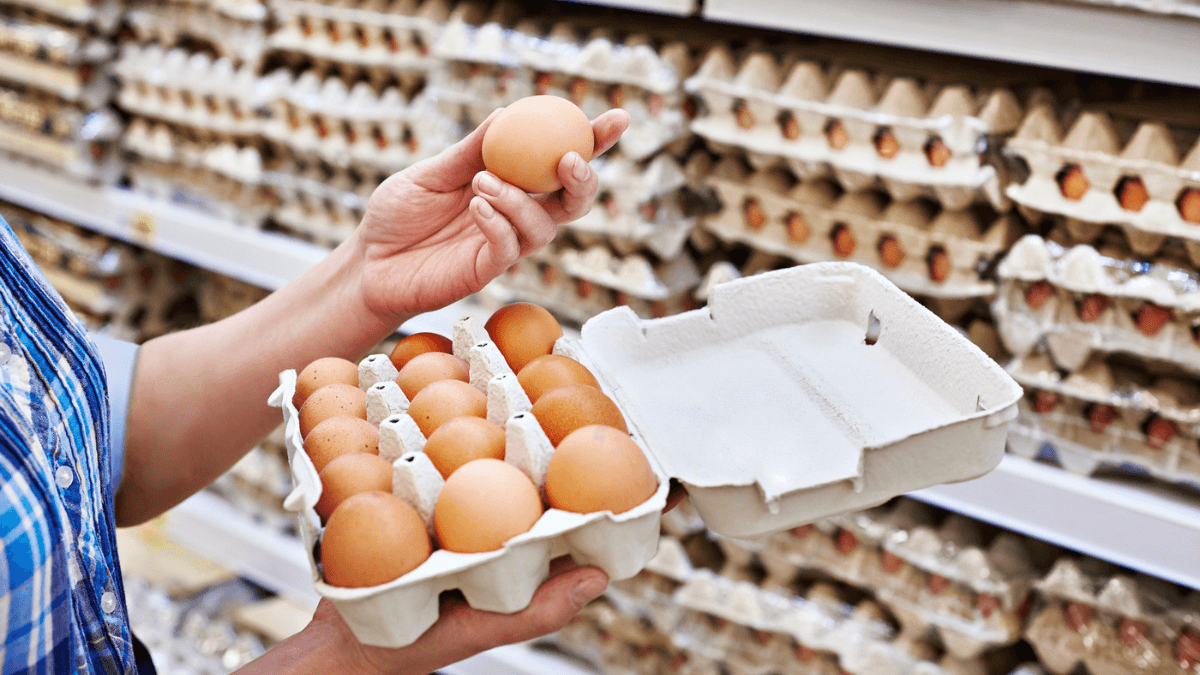
**Why Are Eggs So Expensive? Understanding the Surge in Egg Prices**
Eggs have become a pricey commodity, leaving many wondering: why are eggs so expensive? Several factors contribute to this increase, including rising demand, higher production costs, disease outbreaks, transportation expenses, and changes in consumer preferences. Let’s delve into these reasons to better understand the current egg price surge.
—
### What Is Eggflation?
In the United States, the term **eggflation** describes the recent sharp rise in egg prices. According to the U.S. Bureau of Labor Statistics (BLS), the cost of a dozen Grade A large eggs increased to $2.52, mainly due to the worst bird flu outbreak in U.S. history. The pandemic and overall inflation caused chicken feed, labor, and transportation costs to rise, further pushing up egg prices.
Although the impact of bird flu has lessened and prices have fallen, egg costs still haven’t returned to pre-pandemic levels.
—
### Current Egg Prices Across the USA
Egg prices vary significantly across different regions in 2024. For instance:
– **Hawaii** reports the highest prices, nearly $10 per dozen.
– **Missouri** has some of the lowest prices, around $4.24 per dozen.
Nationwide, according to the Consumer Price Index, the average price for a dozen large, Grade A eggs was around $3 in February, marking an 8.4% increase compared to January. However, this is still much lower than January 2023, when eggs sold for $4.82 per dozen.
—
### Global Trends Affecting Egg Prices
Egg prices have surged worldwide due to the bird flu epidemic and increased chicken feed costs. Even with the decrease in U.S. prices towards the end of 2023, global trends indicate higher costs due to ongoing supply chain challenges and the lingering economic effects of the pandemic.
Additionally, rising demand for fresh chicken eggs, especially during Easter, has contributed to the price increases.
—
### Impact of Bird Flu on Egg Supply
In 2022, the bird flu outbreak decimated over 50 million birds in the U.S., reducing the population of egg-laying hens by about 5%. This significant loss drastically cut egg supply and caused prices to spike.
Beyond the bird loss, producers faced soaring operational costs for disinfection and disease prevention. These expenses, combined with the reduced supply, led to higher egg prices. For example, in California, the price for a dozen large eggs jumped from $4.83 to $7.37 year-over-year, reflecting similar trends across many states.
Although wholesale egg prices are decreasing—indicating a return to normal—there remains concern about a possible flu resurgence, especially during spring wild bird migrations.
—
### Inflation’s Role in Rising Egg Prices
Inflation has significantly contributed to increased egg production costs. Key drivers include rising prices for chicken feed, primarily grains like corn and soy, which have been affected by global supply chain disruptions.
These production cost hikes translate into higher retail egg prices, impacting consumers’ grocery bills. While there is hope for price stabilization soon, the current high cost of eggs exemplifies the broader economic impact inflation has had on both producers and consumers.
—
### Middlemen and Corporate Distribution Costs
Another often-overlooked factor inflating egg prices is the role of middlemen or corporate distributors. These intermediaries manage transportation, warehousing, and logistics between farmers and retailers, adding layers of costs.
Rising labor and equipment expenses due to inflation have further increased these distribution costs. According to Jeff Smith, co-owner of Cackle Hatchery in Missouri, the labor shortage combined with growing demand pushes up expenses on their end.
Additionally, corporate profit margins play a role. Large distributors and retailers sometimes mark up prices beyond actual inflation to increase profits. The U.S. House Subcommittee on Economic and Consumer Policy has analyzed these practices, noting that they can significantly inflate consumer prices for eggs.
—
### Impact of the War in Ukraine
The ongoing Russo-Ukrainian war has disrupted the global supply of key chicken feed ingredients like corn and soy. Before the war, much of these grains were imported from Europe.
With shortages and supply chain disruptions, chicken feed costs have surged, forcing poultry farmers worldwide to spend more on egg production. This increase in production costs is driving up egg prices globally, showing how major geopolitical events can ripple through markets and affect everyday consumer goods.
—
### Strong Consumer Demand
Egg prices typically rise each year around Easter due to increased demand. The inability of supply to meet this demand causes prices to spike, affecting those who celebrate the holiday as well as consumers who buy eggs regularly.
Higher egg prices during this period may strain household budgets, even for those not planning traditional Easter activities like egg-dyeing.
—
### Will Egg Prices Go Down Soon?
Good news for consumers: fresh egg prices are finally dropping. Recent data shows about a **32% decrease** in the price of a dozen Grade A large eggs, primarily due to recovery from last year’s bird flu outbreak.
As more hens return to the market, egg supply is increasing and prices are normalizing. Wholesale prices have dropped nearly 80% from their peak, down to just over $1 per dozen.
This trend suggests that consumers can expect lower store prices in the near future. However, how much retailers will reduce shelf prices remains unclear, as they ultimately control retail pricing and may delay adjusting prices despite lower wholesale costs.
—
### Frequently Asked Questions
**Why Are Eggs So Expensive?**
The outbreak of bird flu drastically reduced the egg-laying hen population, cutting egg supply. Rising production and distribution costs further contribute to higher prices.
**Why Is There a Shortage of Eggs?**
The bird flu outbreak resulted in culling millions of hens, significantly reducing the egg supply.
**Which Country Has the Most Expensive Eggs?**
According to Global Product Prices, New Zealand has the most expensive eggs in 2024, with prices reaching $6.93 per dozen.
**Why Are Some Eggs Cheaper?**
Egg prices can drop when supply increases or demand decreases. Seasonal factors such as post-Easter slowdowns and fluctuations in wholesale markets influence price changes.
—
### Conclusion
The rising cost of eggs can be attributed to multiple intertwined factors, including disease outbreaks, inflation, supply chain issues, geopolitical events, and consumer demand trends. By understanding these dynamics, consumers can better appreciate why this breakfast staple has a higher price tag today and what to expect moving forward.
—
*Related Reads:*
*(Include links to related articles or resources here)*
https://radicalfire.com/why-are-eggs-so-expensive/




